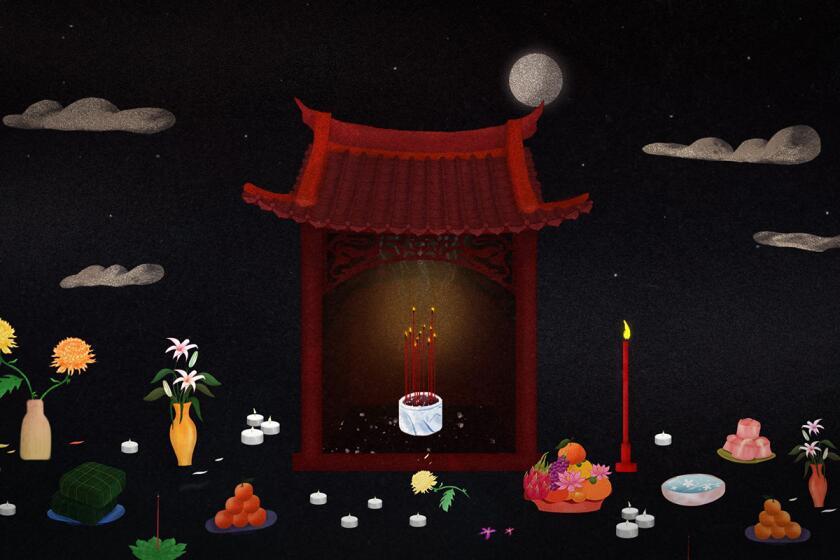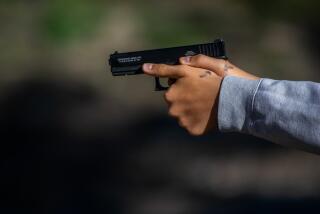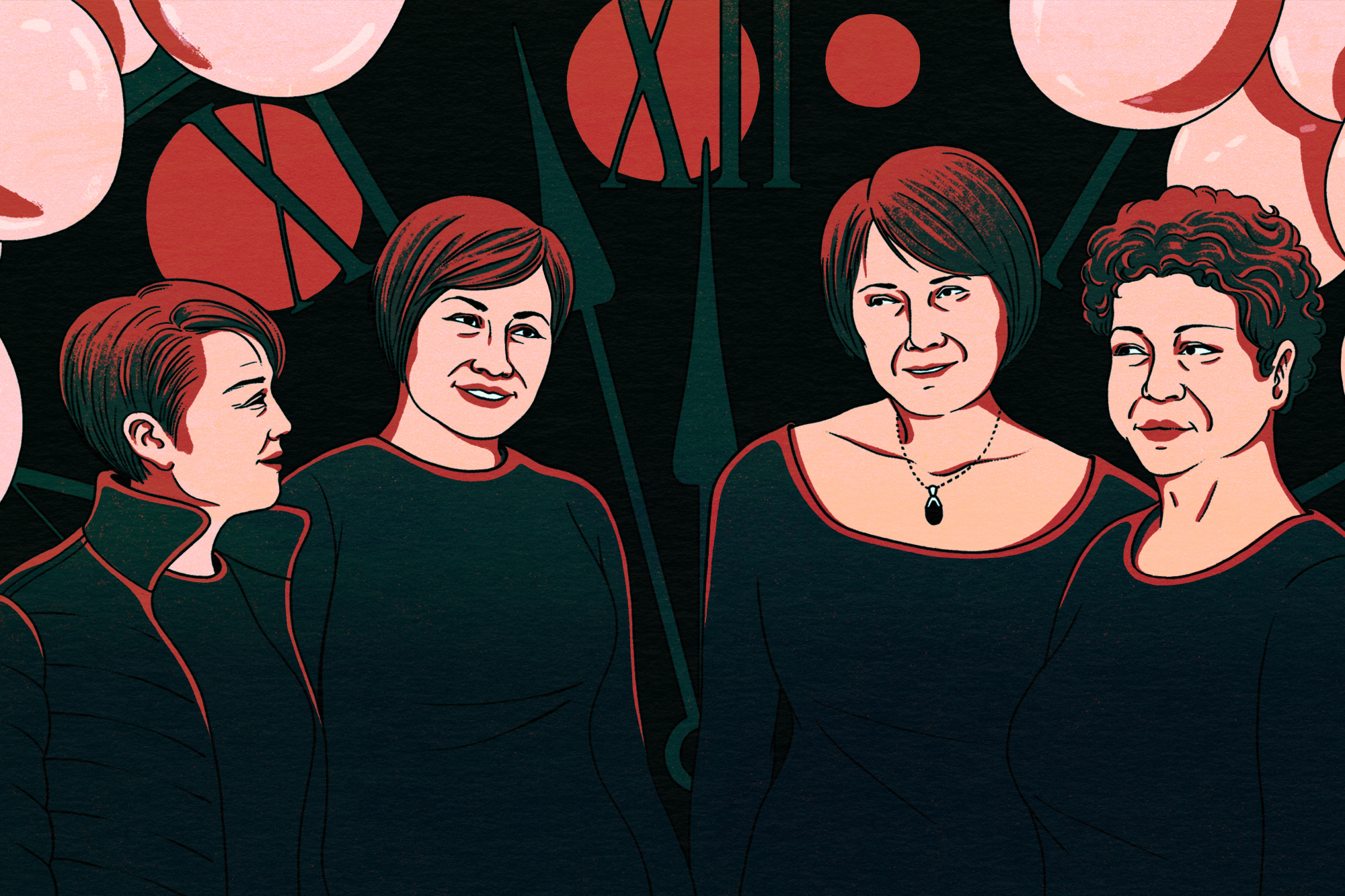
)
The four smiling women pose before a festive backdrop, with its outsize clinking champagne glasses and clock about to strike midnight. They wear red, a symbol of good luck.
Shally wears flared black pants decorated with crystals. The 57-year-old has on a bob-cut wig “to make it special.” This is a Lunar New Year’s Eve party, after all.
An hour after that photo was taken, around 10:20 p.m., a 72-year-old man walked into Star Ballroom Dance Studio armed with a semiautomatic pistol. As he started spraying bullets, dancers confused the gunfire with fireworks.
But people began dropping to the floor. Screams rang out.
From her vantage point, hiding under a table, Ren could see a “very long” gun and the shooter in dark clothing.
The 57-year-old had a single thought: “My life will end here.”
On Jan. 21, the Monterey Park community was shattered when the Star Ballroom Dance Studio became the site of one of California’s worst mass shootings in recent history. Many of the victims were studio regulars united in their passion for dance. Here are their stories.
When the gunfire stopped, 10 people had been killed. Another died in a hospital.
Two of the women in the photo had been shot. One died.
The attack shattered the dance community of Monterey Park, a storied hub of Southern California’s Chinese community.
Accounts from witnesses inside, many who asked not to be identified by their full names, paint a clearer picture of the evening’s horror, as dozens gathered to celebrate the most important holiday of the year.
Star Ballroom Dance Studio on Garvey Avenue in Monterey Park is well known to the middle-aged and senior population of the San Gabriel Valley.
Tucked into a strip mall, it sits beside Traditional Guilin Noodles restaurant. Green and white awnings shade windows that face into the ballroom. A sign out front boasts a Korean long drum dancing class, taught by a renowned Korean dancer.
A message in the studio’s WeChat group advertised a “Chinese New Year Countdown Dance Party,” set for Jan. 21. It was supposed to end at 12:30 a.m.
That night, the studio was decorated for the occasion. The photo backdrop hung beneath red letters that spelled out “Star Ballroom.” It was flanked by balloon arches.
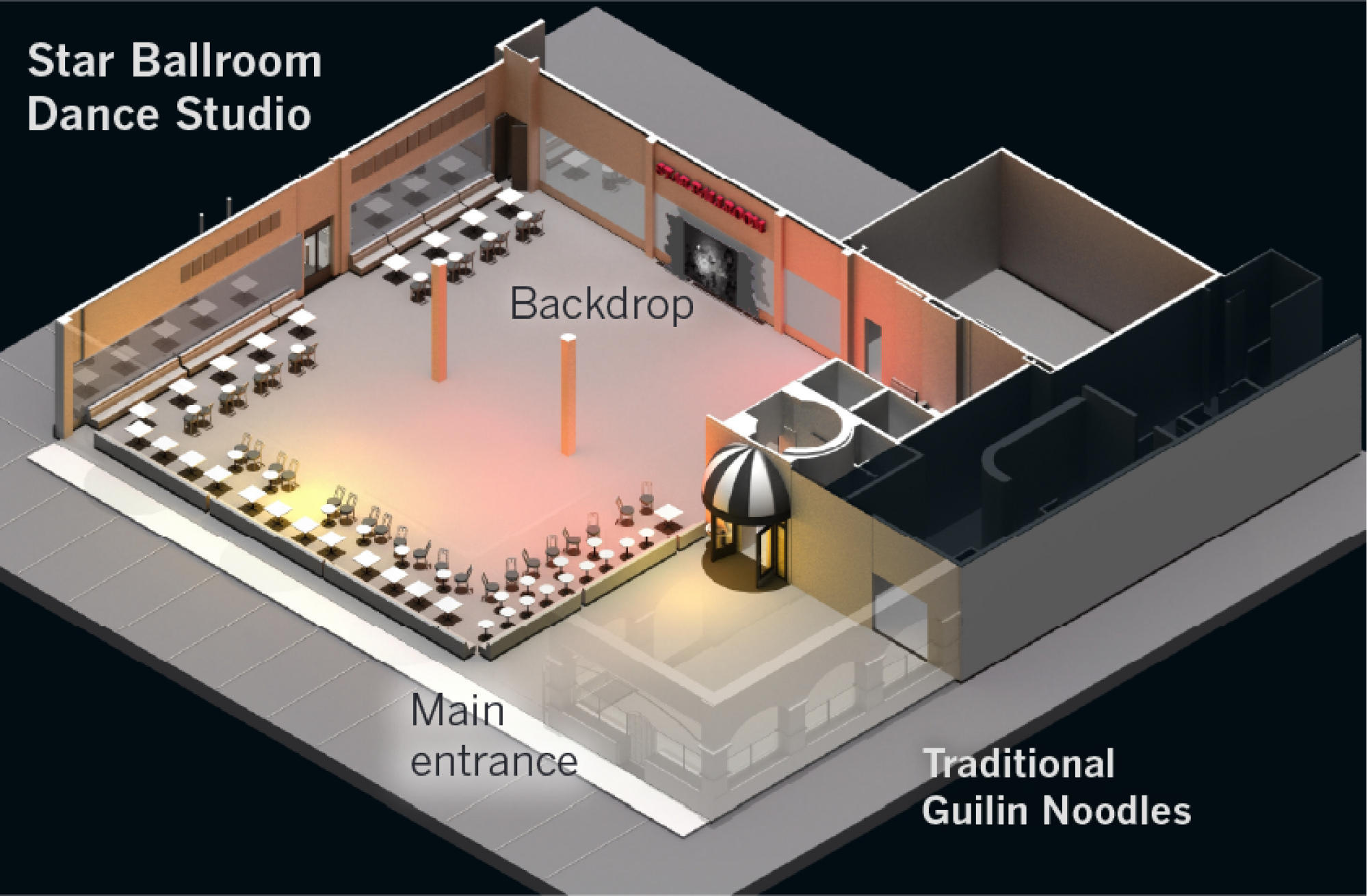
When Ren arrived about 7:30 p.m., Ming Wei Ma was still placing numbers on each table. The regulars were familiar by then with 72-year-old Ma, a beloved “boss” at the studio. He was the kind of gentleman who’d walk women to their car if dance classes ended late at night.
“How many of you?” Ma asked Ren.
“Five,” she replied. The group included her friend Niu, who had been to the dance studio a few times.
Ma asked where they’d like to sit, and Ren pointed to a table near a mirror in the far back left side of the room. A different table from where she normally sat. Ma labeled it with her name.
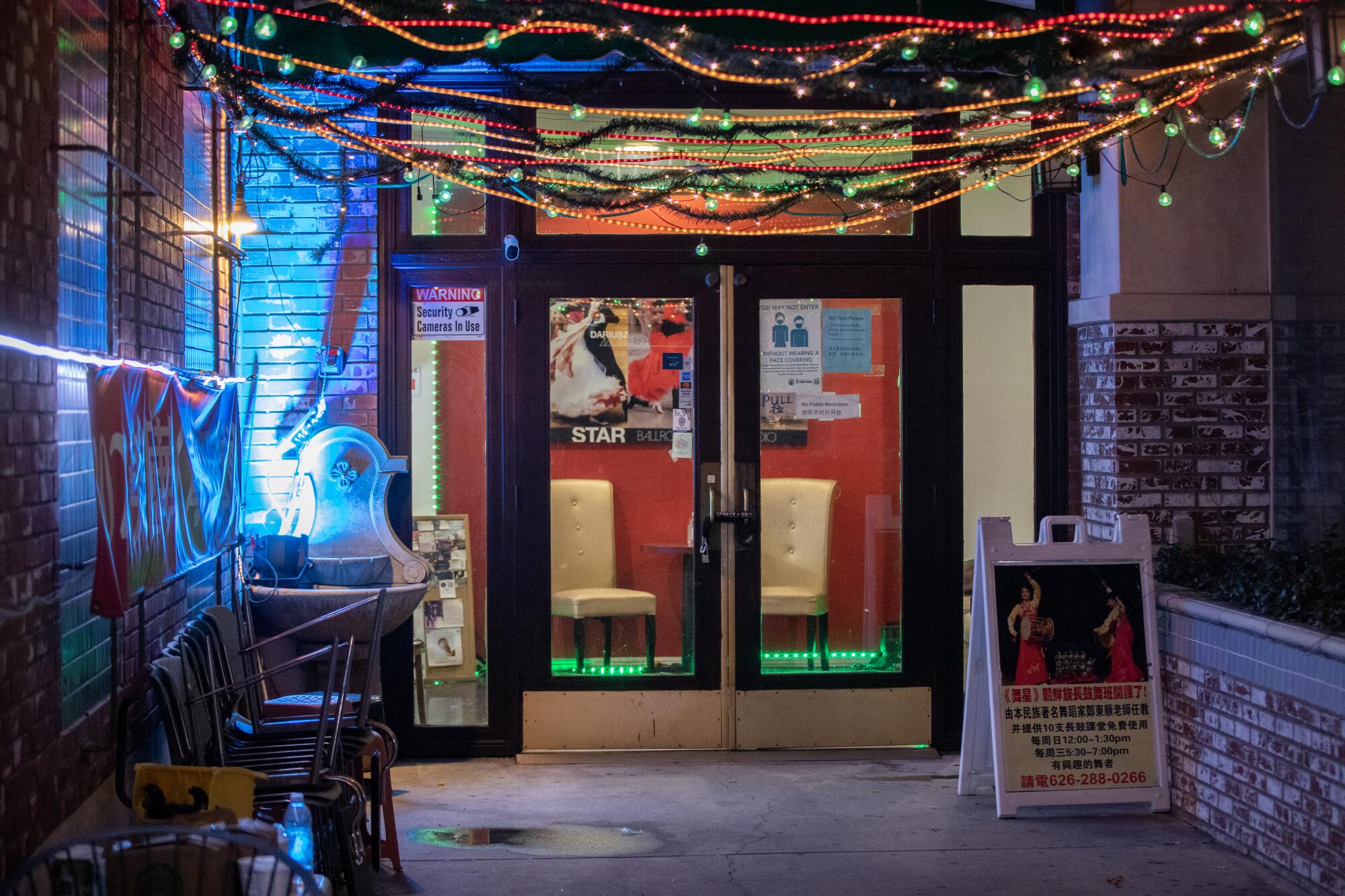
Shally arrived soon after, at around 8 p.m. She greeted other guests with “gōng xǐ fā cái,” wishing them prosperity.
She hadn’t bought a ticket, so she told a friend she would repay her if she covered the $15 entry fee. Shally asked for a square table near the dance floor, where she sat alone.
Her husband doesn’t dance and didn’t join her. The one condition of their three-year marriage, she said, was that she could go dancing on the weekends. She had taken a cha-cha class at Star 15 years ago and never stopped dancing.
Through Star, she met Yu Lun Kao, who she knew as Andy. He’d been her dance partner for more than a decade. To her, he was “Mr. Nice.” Any weekend she called him to say she was dancing, he would join her.
“Any hour we had time, we never waste the time. We had to come dancing,” Shally said. “Only dancing make you happy.”
Although her partner didn’t arrive for another hour, Shally didn’t wait to start moving. Over the years, she had learned the men’s and women’s dance steps so there would be “no need to wait for the man.”
She took two women she knew for a spin on the floor, losing herself in the movement. When you dance, she said, “you forget everything.”
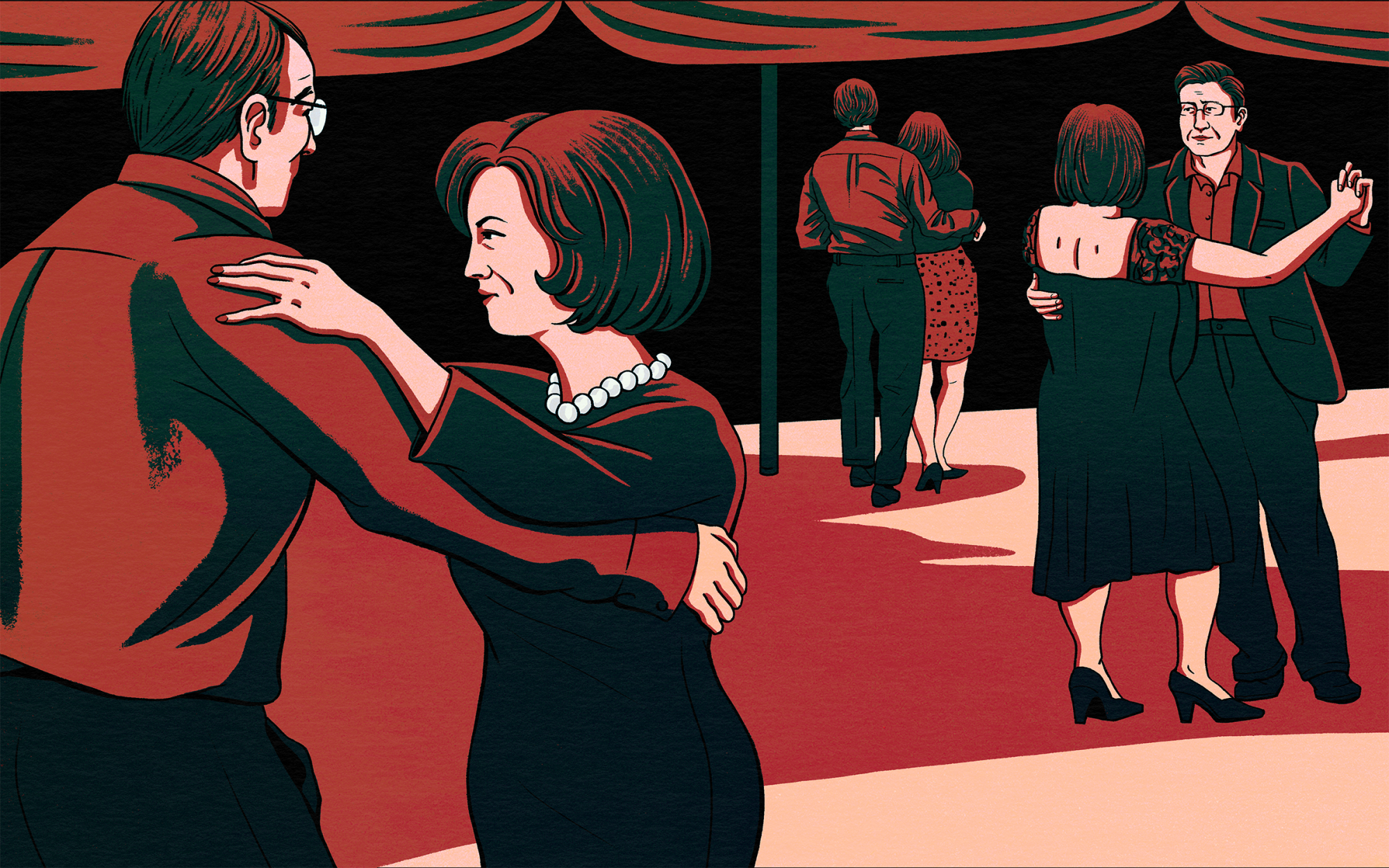
Tony, 64, and Jennifer, 62, regulars at the studio for the past decade, arrived about 8 p.m. They sat near the entrance before spotting an empty table and asking Ma if they could move. He said yes and put them off in a corner, far from the front of the dance hall.
Jennifer asked Ma to play a song so the couple could dance the tango.
Xiujuan Yu, 57, had never been to Star before the Lunar New Year celebration. A friend had called and told her about the festivities. Yu decided to go with LiLan Li, 63, and a third friend.
Nikon Lou, an Alhambra resident, met three friends there. The women said they had only one male partner to dance with and urged Lou to join. They sat away from the front entrance, near an exit door. Lou snapped the photo of Shally and her friends.
There were around 50 or 60 people there that night, much fewer than the hundreds Shally remembered turning up for the recent Christmas party.
Among them was Mymy Nhan, 65, who attended dance classes at the studio as often as she could. Her longtime dance instructor saw her as “the light of the class and the light of the studio.” She was a fixture at Star on Saturday nights.
Although the Lunar New Year party was set to go past midnight, Nhan decided to leave early.
She wanted to set up the family shrine to pay homage to her ancestors.
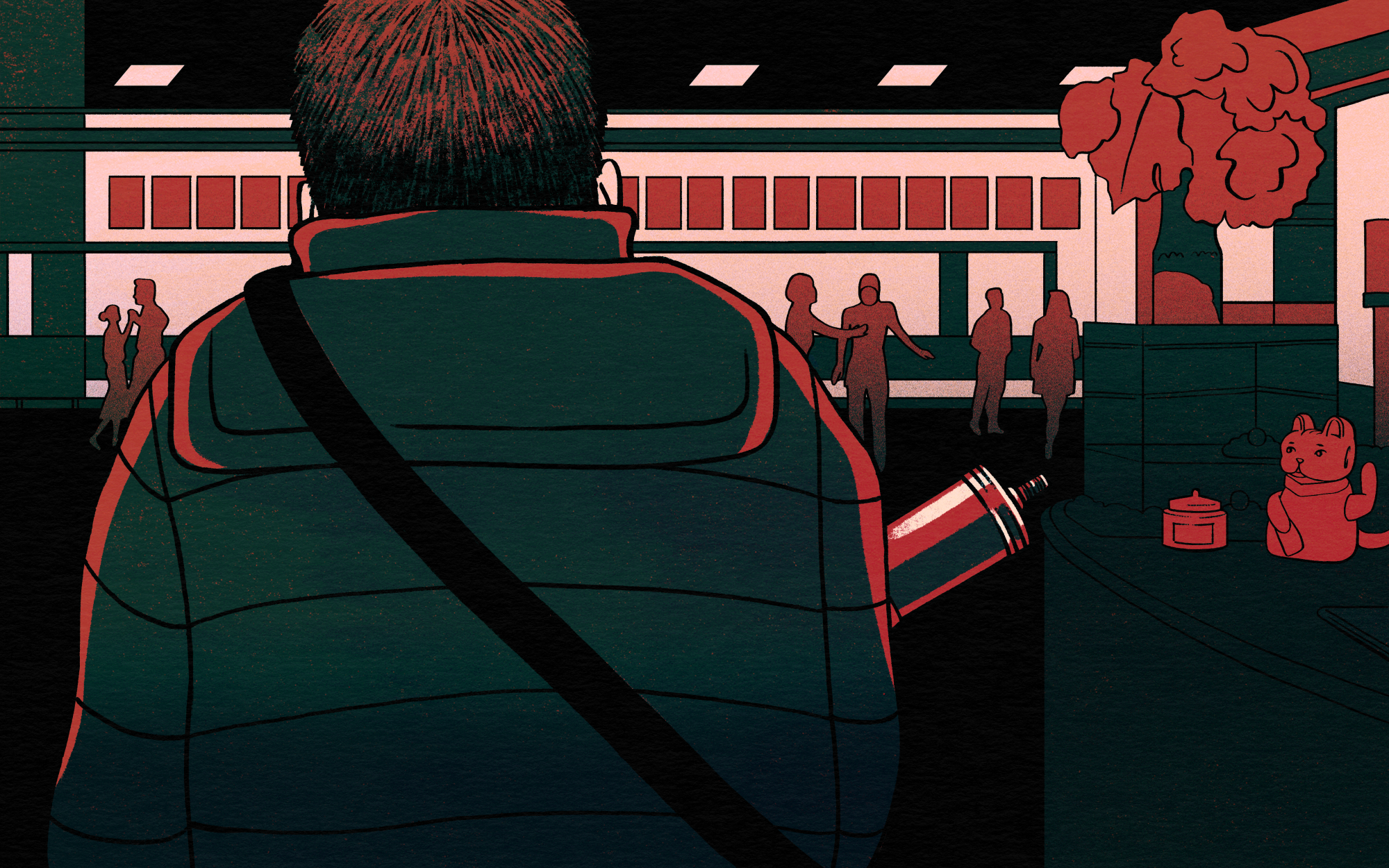
Huu Can Tran had been to the dance studio. But he hadn’t been a familiar face for at least five years.
On this cold winter night, he was armed with a semiautomatic MAC-10 assault weapon.
Tran appeared to be spiraling over the last few weeks.
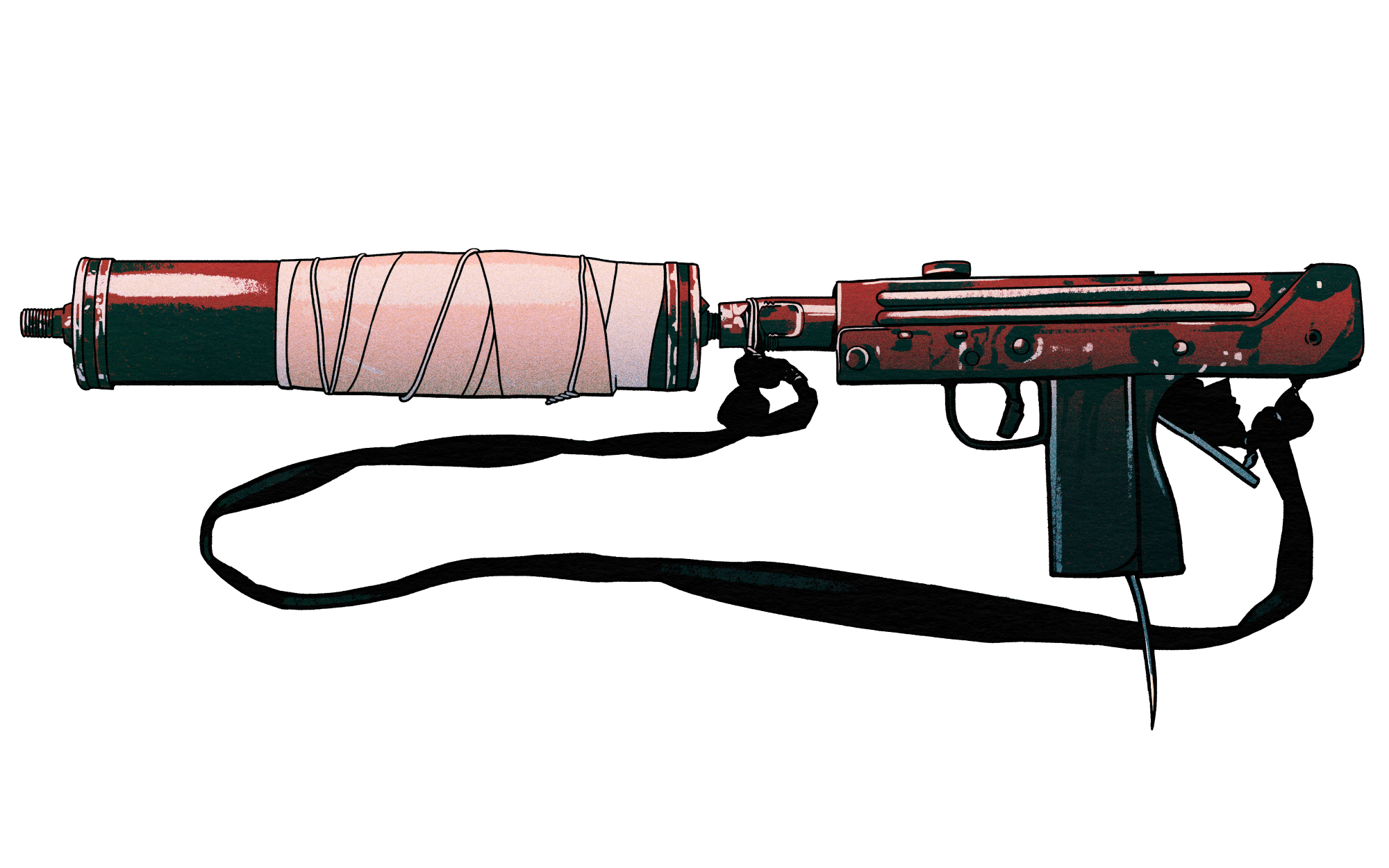
He’d shown up twice to the Hemet Police Department, near his home, alleging that family members had tried to poison him decades earlier. He also claimed to have been the victim of fraud and theft. He never returned with evidence.
Tran had amassed hundreds of rounds of ammunition in his trailer park home, along with supplies to make homemade firearm suppressors, which muffle the sound of a weapon firing.
Earlier that Saturday, Tran had parked a motorcycle about a block from the dance studio. Authorities believe it was part of an escape plan.
As Tran prepared to enter the studio, Nhan and her dance partner readied to leave. She was in the parking lot, backing out, when she saw someone in the rearview mirror. It was Tran.
He approached the driver’s side of her car and fired multiple times. Nhan slumped in the front seat, dead. Her dance partner, who hadn’t been shot, didn’t recognize the gunman.
Tran turned his attention to the studio.
On the dance floor inside, Shally and Andy were dancing a lively and fast-paced jive. Nearby, dozens of people line danced to the Chinese song “Light Rain in March.”
Ren’s dance instructor corrected her moves. He asked her to face the mirror to see how to improve her form.
Niu, Ren’s friend, had rushed to the front of the room to learn the steps from another instructor. The entrance to the dance studio was to Niu’s right.
Xiujuan Yu’s friend needed to use the restroom and left the dance floor.
Tony and Jennifer were sitting at their table, taking a break.
The revelers were so enthralled by the dancing, they didn’t see Tran walk in. When he began to shoot, they mistook the gunfire for Chinese firecrackers. They had heard those at past celebrations.
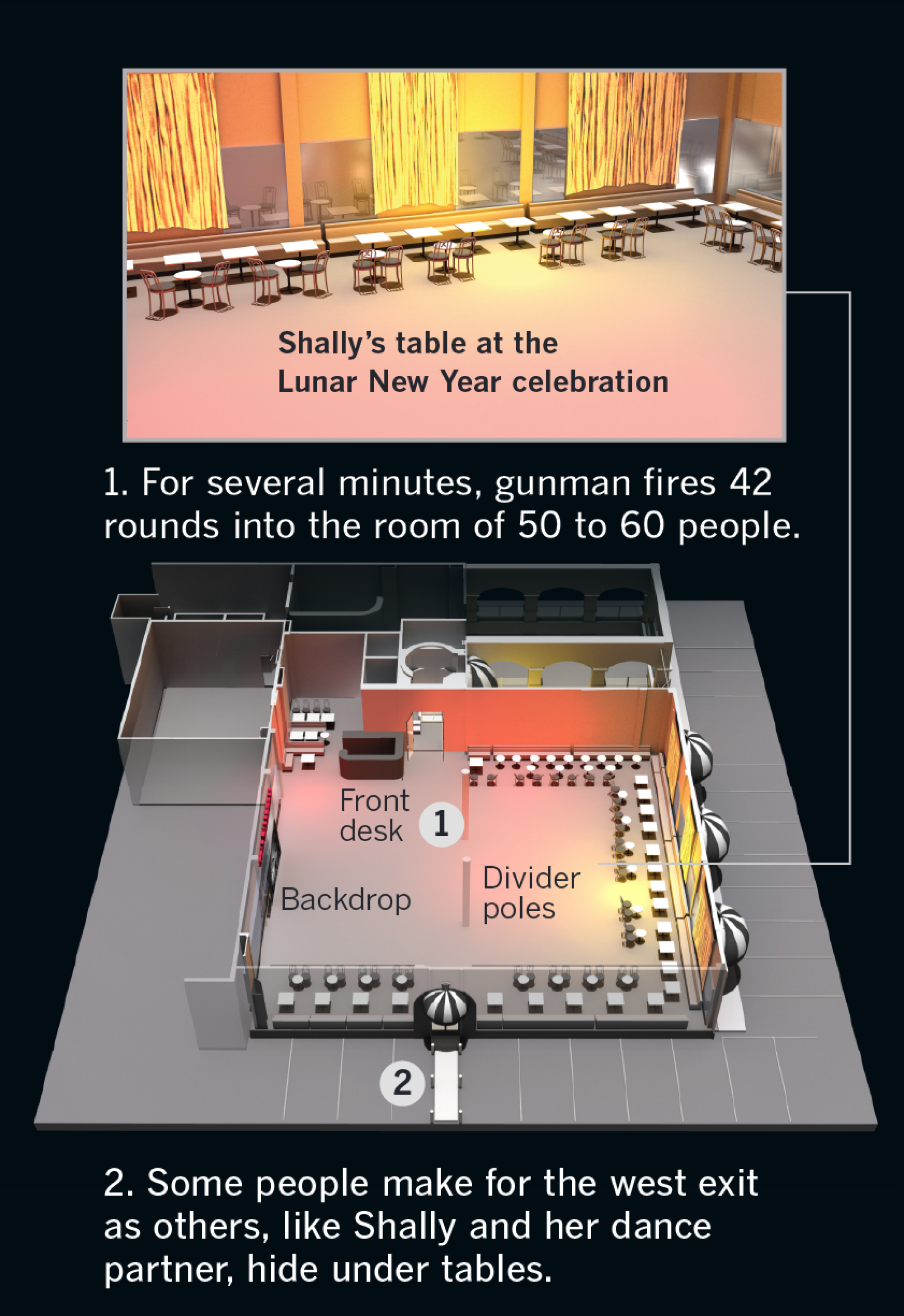
Niu saw a couple beside him fall to the floor. He thought they had slipped. He was about nine feet from the front desk and could smell gunpowder, a similar scent to firecrackers.
“After that, you hear the sound and it’s not right,” Shally said. “This one was like boom, boom, boom, boom, boom, boom, boom, boom. It did not stop.”
Near Niu, a man yelled, “Gunshots!”
Niu ducked to the ground and began crawling away from the entrance, to the left corner of the hall. He made his way into a storage room, a tiny 1½ by 3 feet.
“Hurry up, get into the room,” someone said.
“This one was like boom, boom, boom, boom, boom, boom, boom, boom. It did not stop.”
— Shally
Niu was halfway in when several women followed, crawling in and piling on top of him. There were about five or six people squeezed inside. They didn’t dare move.
Outside, everyone, including Ma, was on the ground.
After the first shot, Tony was hit with debris from something that had shattered nearby. Jennifer was also hit in the leg with flying fragments.
The couple ducked under a table and lay still on the ground. Others started running, looking for a place to hide.
“People were falling and bleeding,” Tony said.
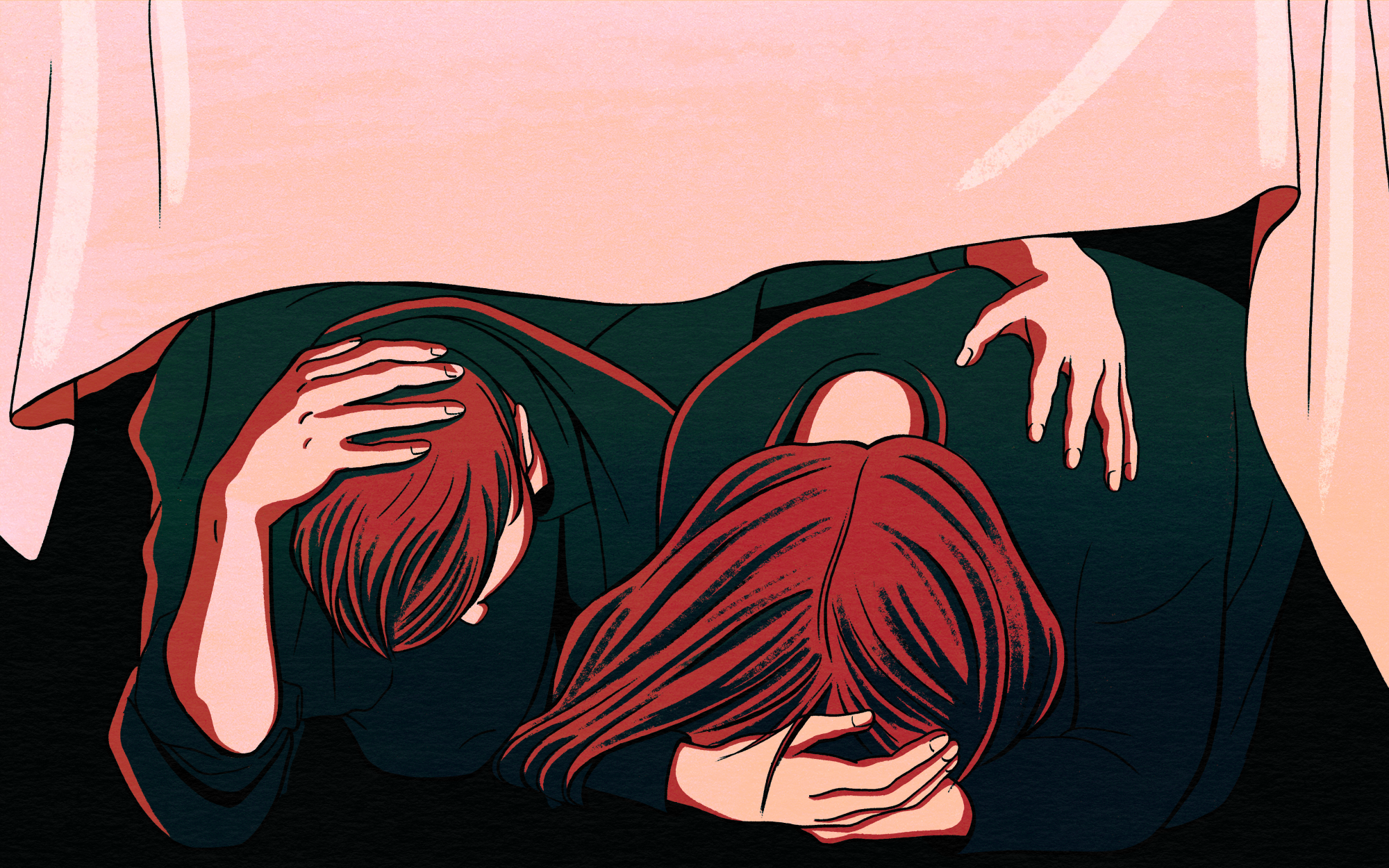
The music kept playing.
After the gunshots rang out, Lou saw a man nearby frozen in place, the only person still standing. Lou rushed over and pulled him to the floor.
Shally grabbed Andy’s hand and pulled him under a table. They held onto each other.
From there, Shally saw the shooter stop and disappear from view. When he came back, she watched him reload the gun, his face angry.
“Please, don’t say anything,” she whispered to Andy, who appeared poised to speak. “Just lay down.”
Terrified, Shally squeezed her eyes shut. She said a silent prayer: “Please, protect us.”
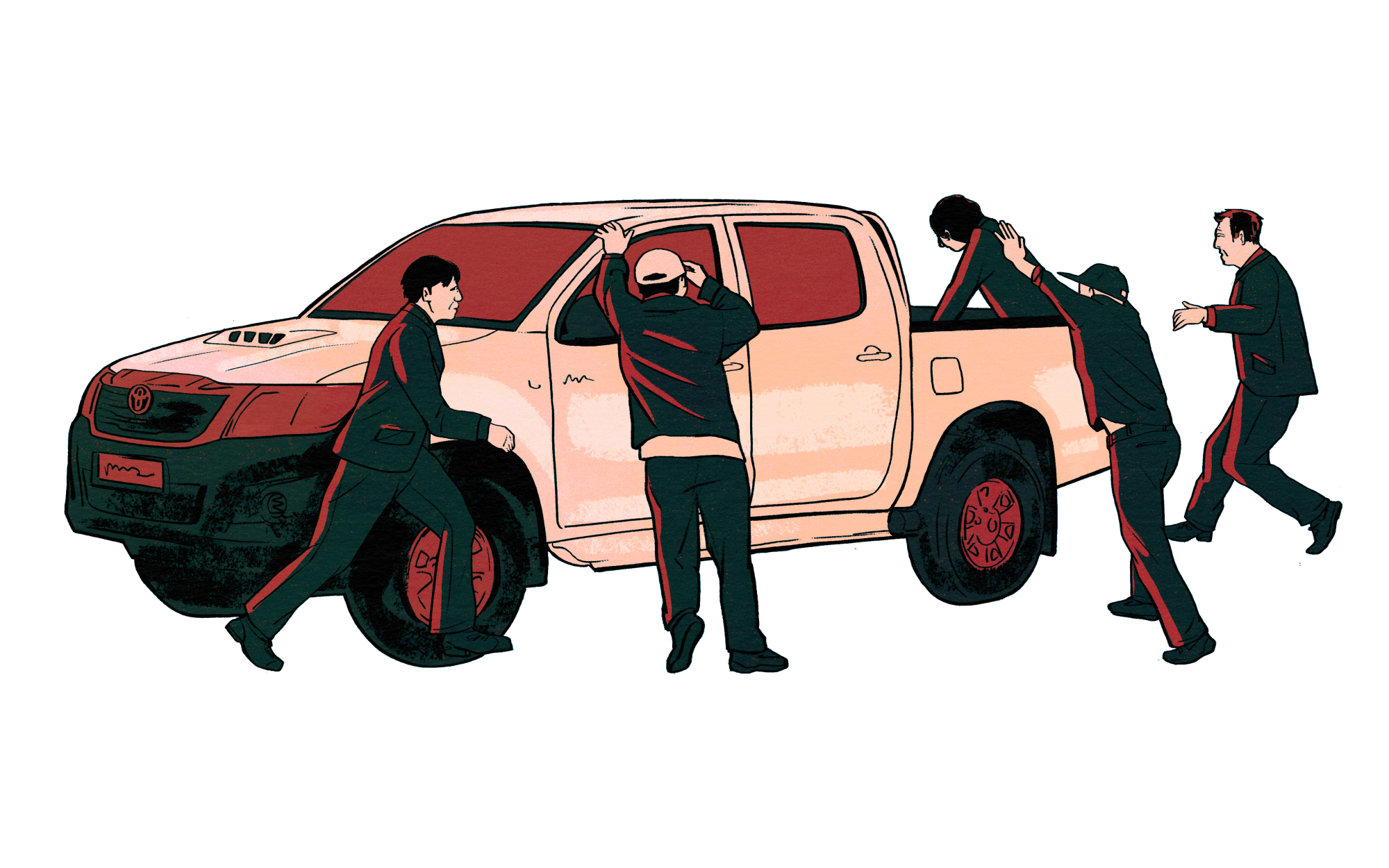
Chaos spilled over outside of the studio and into the streets of Monterey Park, a largely Asian enclave less than 10 miles east of downtown Los Angeles.
Three people ran into The Clam House, a seafood barbecue restaurant across the street from the carnage. It was one of the last places open late at night.
“Lock the door,” they pleaded with the restaurant owner, Seung Won Choi. There was a man with a gun, they said. The shooter had multiple rounds of ammunition.
Their faces were pale with terror — “hot white,” Choi said.

Using witness accounts, original video, photographs, emergency dispatch recordings and user-generated content, this video recounts the details of what happened on Saturday, Jan. 21, when a gunman opened fire at a ballroom dance studio in Monterey Park, killing 11 people and injuring nine.
A little after 10:19 p.m., Bill was sitting in his Toyota truck, Snapchatting his girlfriend and blaring “Ghetto Bird” by Ice Cube. The 20-year-old had just stopped by the Bank of America ATM, three doors from Star Dance Studio, en route to his girlfriend’s house.
Just as he was about to drive away, a panicked half-dozen people charged toward his truck. Most looked older than 60. He watched as two people stood on his back wheel and hopped into the truck’s bed. An older man knocked on his front window.
“You need to drive,” the man told him. “There’s danger.”
Bill helped the older man get into the back of the truck along with three or four others. They were screaming in a language Bill didn’t understand.
He assumed they were running from a fight, or maybe a fire. It was only as he left the parking lot that he realized what they were escaping. He heard gunfire.
“Drive! Drive! Drive!” the man yelled.
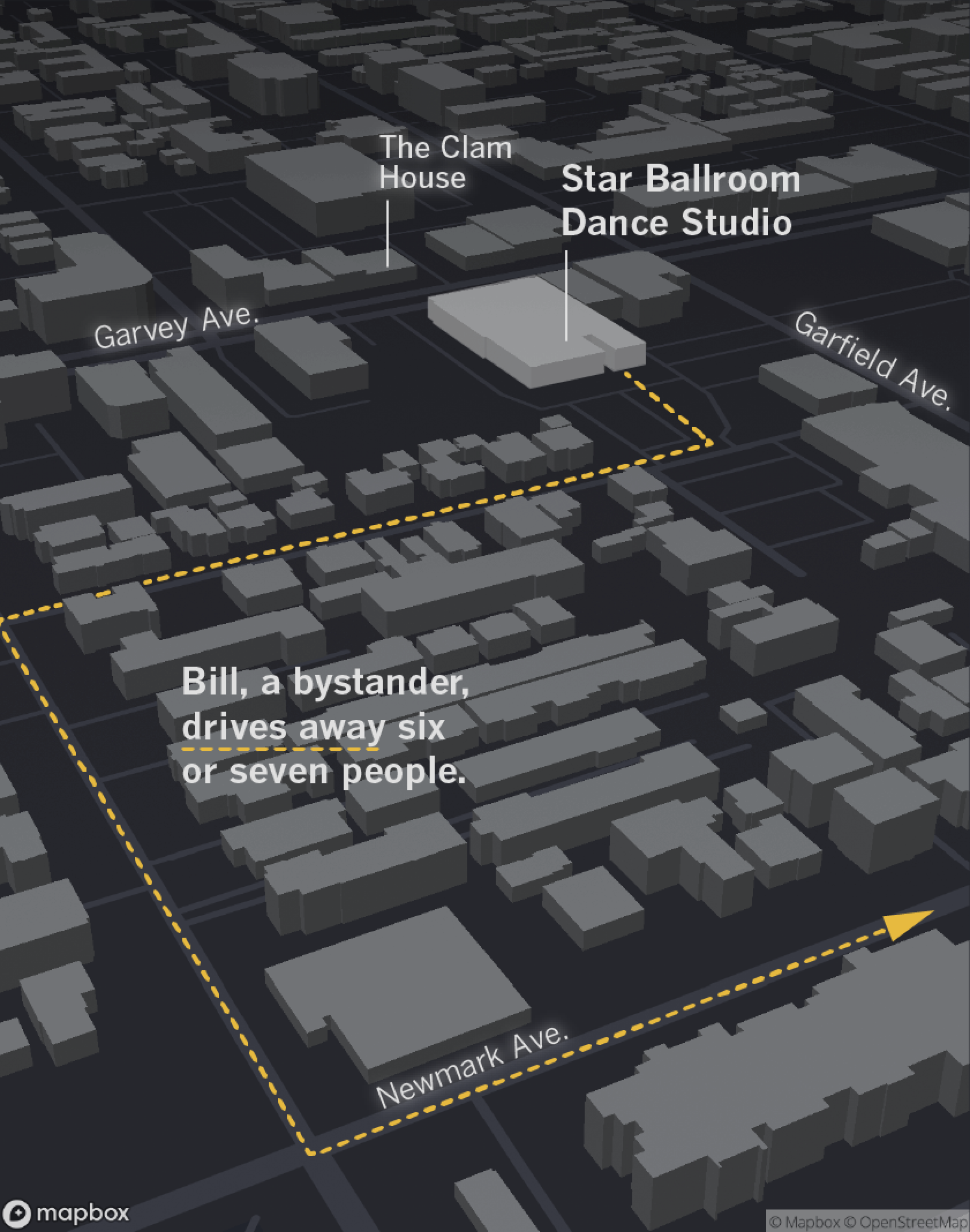
While Tran reloaded, Lou raced out of the studio’s side exit. Before Lou reached the bottom of the wheelchair ramp, he heard the shooting start anew. He ran through the parking lot and — at 10:22 p.m. — he called 911.
The dispatcher said he was the first to call.
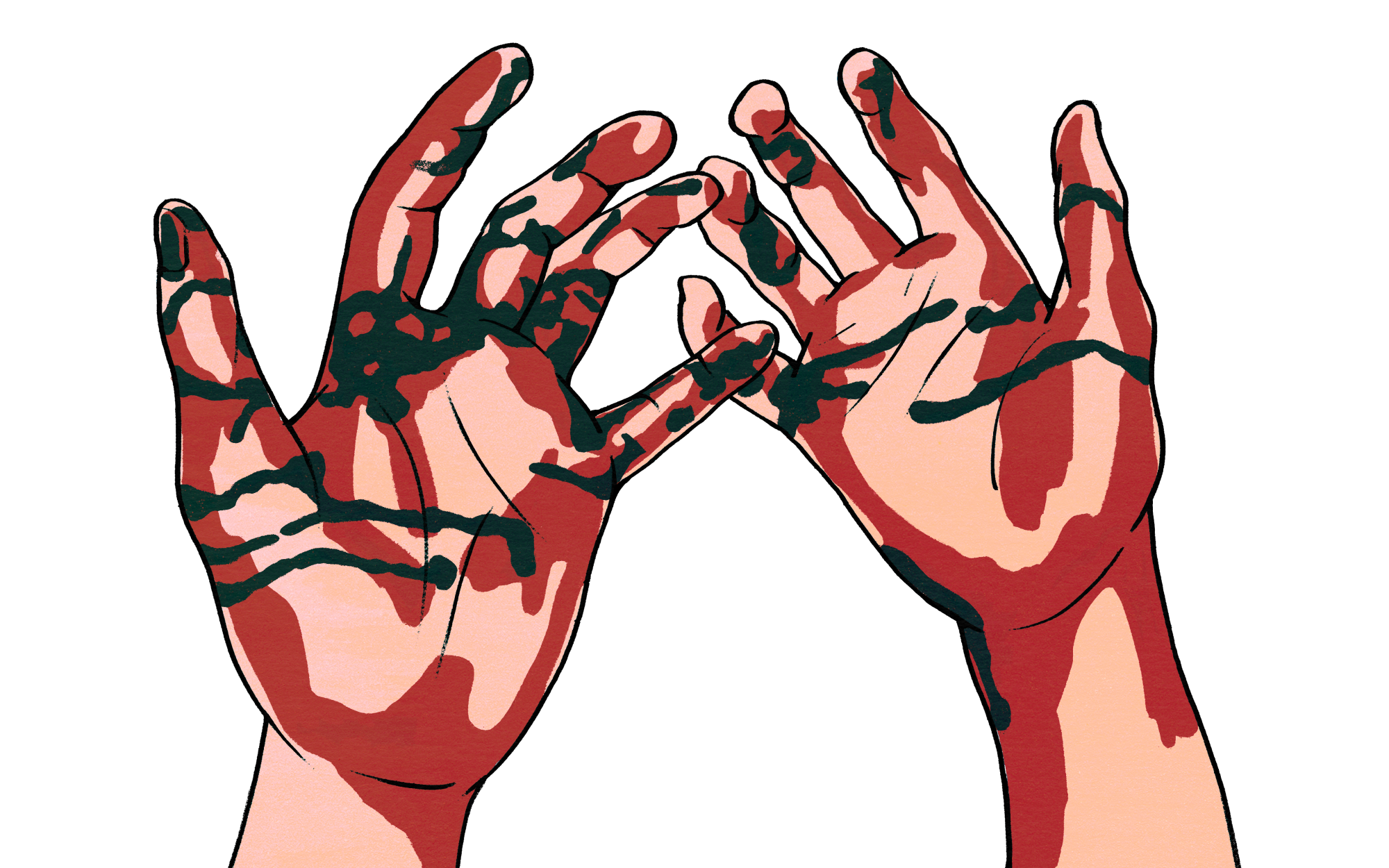
)
Tran fired 42 rounds over several minutes. After he left, no one moved.
Then, Tony said, someone turned on the light. The music stopped. Jennifer spotted Ma lying by a mirror. She’d recognized his red shirt.
Xiujuan Yu’s friend had heard loud noises outside the bathroom. She crept out onto the dance floor. She saw Yu sprawled on the hardwood floor and Li slumped in the chair.
Underneath a nearby table, Shally called out to her dance partner: “Wake up! Wake up!”
He didn’t respond. Then she realized her hands were covered in blood.
“What happened?” she screamed. She thought she’d been shot.
A woman next to Shally told her that, if she could yell, she was OK. She asked Shally to call 911. Shally told the dispatcher that a lot of people were injured, and there were “bodies dead on the floor.”
“Please come right away,” she said.
Within minutes of the 911 calls, Monterey Park police officers — including rookies who had been on patrol for just months — rushed to the scene. They saw dozens of people fleeing, some injured.
Niu got up when he heard the police arrive. Outside the storage room, he saw a man had been shot and was bleeding from his stomach. As he took a few more steps, Niu saw more injured people on the ground.
“Each time I stepped forward, I would find a person on the ground,” Niu said.
The blood on Shally’s hand wasn’t her own. It was Andy’s. Her dance partner had been shot in the chest. He died, lying on the floor beside her.
First responders triage survivors. (RMG News)
The gunman was gone. He had shot 10 people to death. At least 10 others were injured.
Tran’s next stop was Lai Lai Ballroom & Studio in Alhambra. There, Brandon Tsay, whose family owns the studio, wrested the gun from the shooter’s hands.
Security footage shows Brandon Tsay grappling with the gunman. (AP)
Twelve hours later, Tran sat in his van in a Torrance strip mall parking lot. As officers closed in on him, he shot himself to death.
Questions remain about the gunman’s motives. Chances are, there will be no answers.
Those who were in the dance studio are wrestling with a question of their own. They wonder if they’ll ever be able to return to the place they once loved.
Ren doesn’t think she will go back to the ballroom on Garvey Avenue. For a while, she said, she’ll stop dancing altogether.
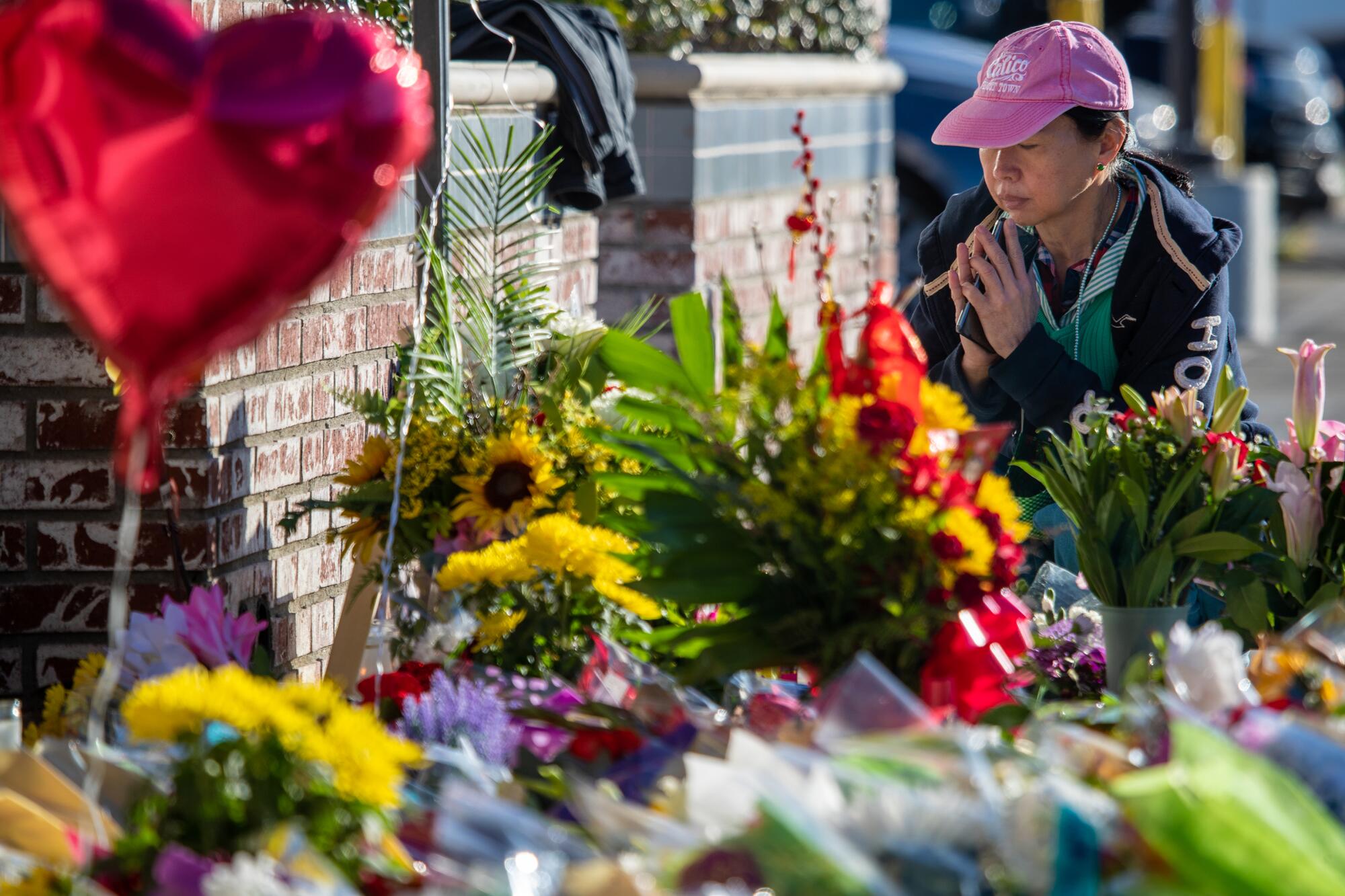
About this story
The Times interviewed six survivors — the majority of them in Mandarin — to piece together what happened inside Star Ballroom Dance Studio on Lunar New Year’s Eve. We connected with dance instructors and dancers who did not attend the party, but who helped reporters understand the layout of the studio. We reviewed videos and photos taken inside Star the night of the shooting and in the months prior. We listened to dispatch recordings to help establish a timeline. Star Ballroom Dance Studio floor plan provided by the Monterey Park City Clerk’s Office.
This story was reported and written by Summer Lin, Brittny Mejia and Rebecca Ellis, with graphics by Lorena Iñiguez Elebee, Sean Greene and Vanessa Martínez. Times staff writers Jeong Park and Jaweed Kaleem contributed to this story. Additional production by Jackeline Luna and Katie Licari. Audio recordings of Shally come from an interview recorded by Times photographer Irfan Khan the day after the shooting. Audio production by Mark Nieto. Video edited by Robert Meeks. Story edited by Maria La Ganga. Graphics edited by George LeVines. Art direction by Taylor Le and Alex Tatusian. Copy-edited by Kevin Ueda. Mary Kate Metivier and Maneeza Iqbal planned the promotion and engagement.
More to Read
Sign up for Essential California
The most important California stories and recommendations in your inbox every morning.
You may occasionally receive promotional content from the Los Angeles Times.
